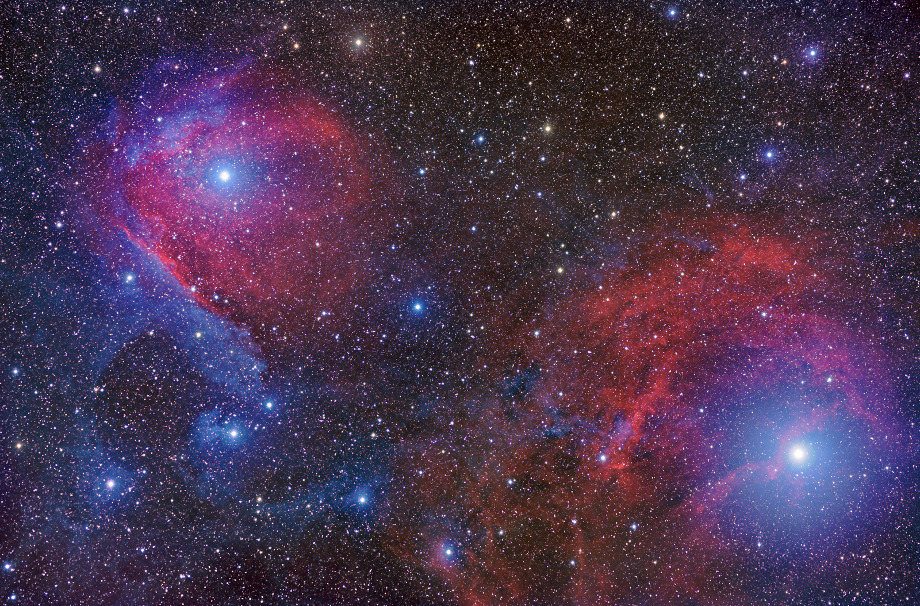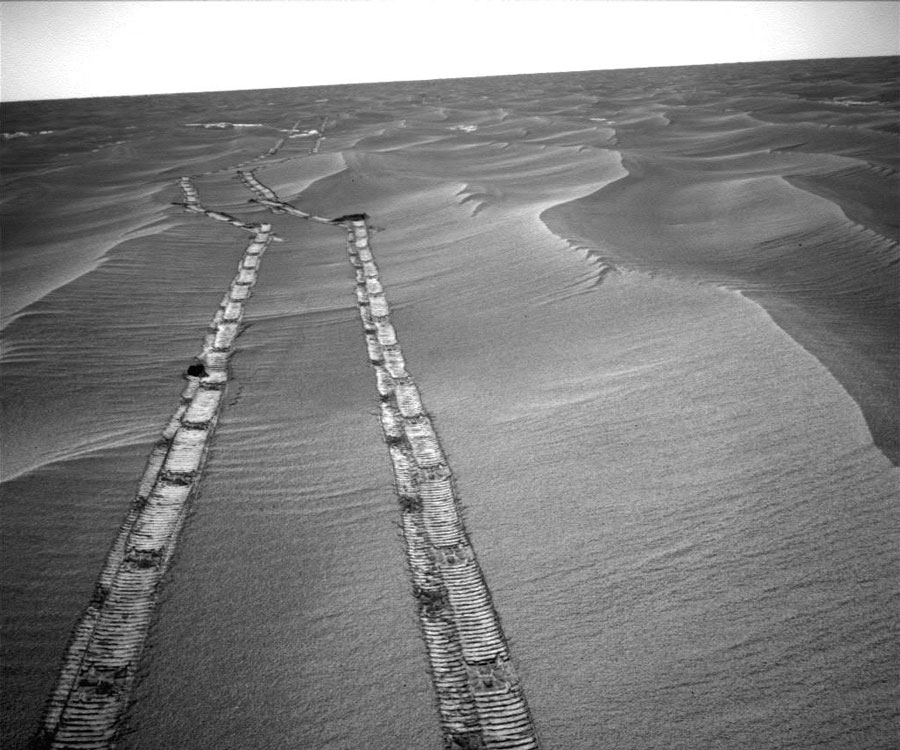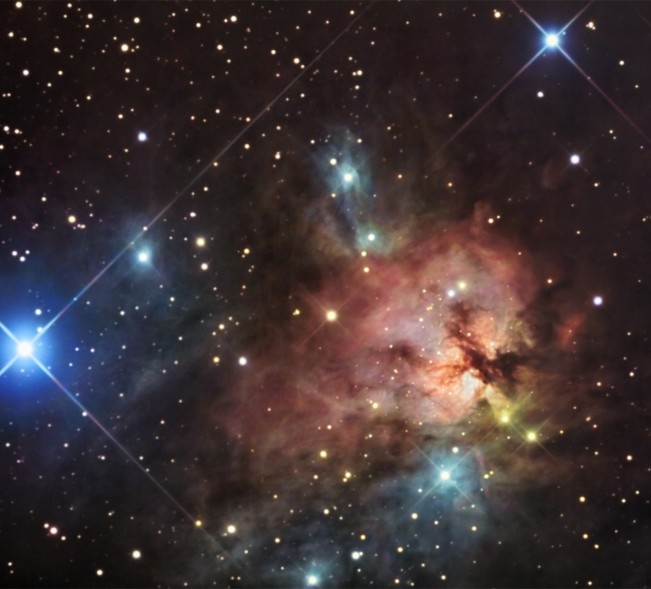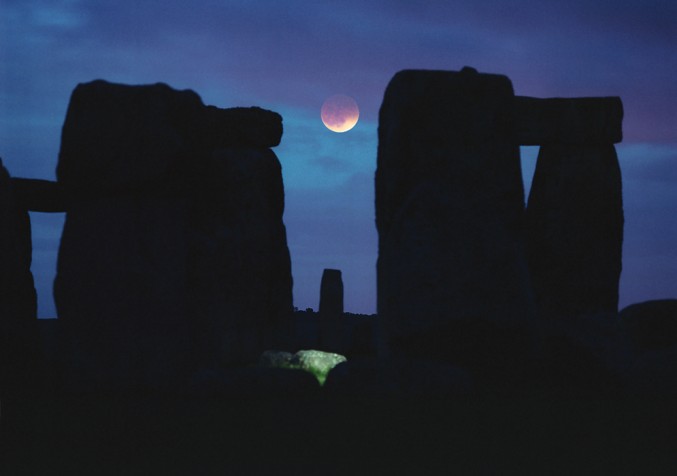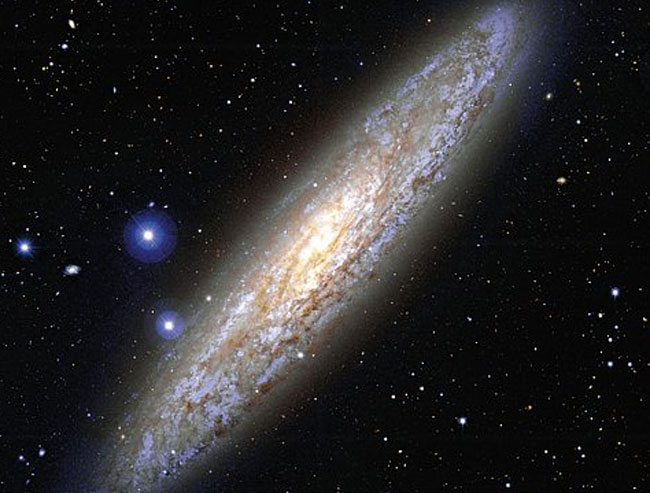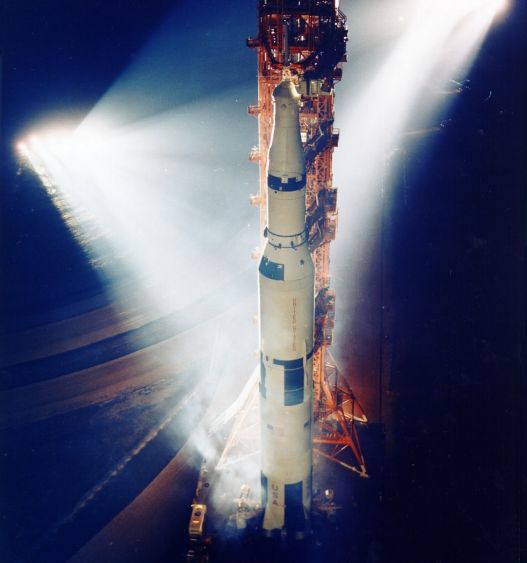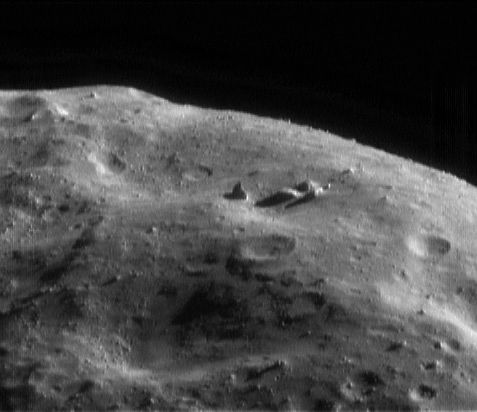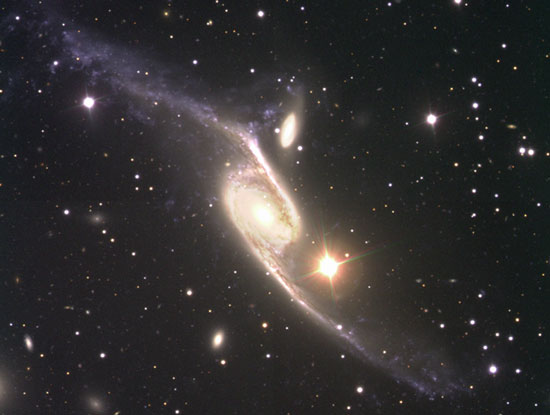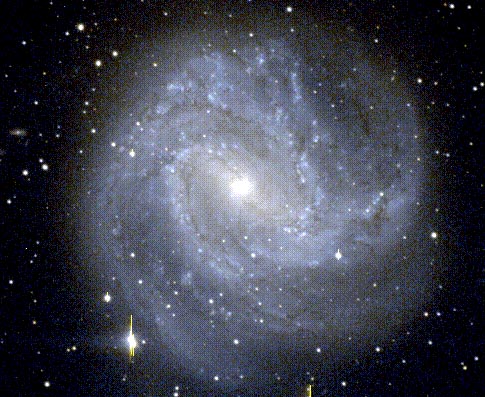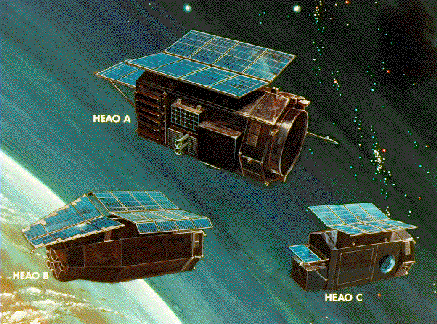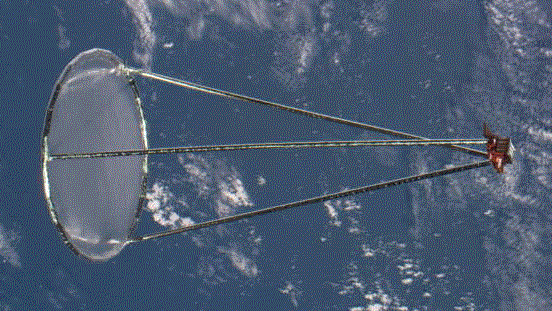| << Previous | Index | Next >> |
2015
[imghover6=http://apod.nasa.gov/apod/image/1505/MW ... o_1080.jpg]http://apod.nasa.gov/apod/image/1505/MW ... otated.jpg[/imghover6]Image Credit & Copyright: César Vega Toledano ; Rollover Annotation: Judy Schmidt
2014 From a camp on the northern shores of the Great Lake Erie, three short bright meteor streaks were captured in this composited night skyscape. Recorded over the early morning hours of May 24, the meteors are elusive Camelopardalids. Their trails point back to the meteor shower's radiant near Polaris, in the large but faint constellation Camelopardalis the camel leopard, or in modern terms the Giraffe. While a few meteors did appear, the shower was not an active one as the Earth crossed through the predicted debris trail of periodic comet 209P/LINEAR. Of course, the long bright streak in the image did appear as predicted. Early on May 24, the International Space Station made a bright passage through northern skies.
2013 This bat-like apparition does not shine on clouds passing over Gotham city. Instead, the cloud bank in silhouette against a colorful lunar corona was spotted on the evening of May 18 over Cochem, Germany from the banks of the river Mossele. The lunar corona is formed as bright moonlight is diffracted by water droplets in thin clouds drifting in front of the lunar disk. Below it lies the region's historic Cochem Castle dating from the 11th century, and not Wayne Manor. Still, regardless of your location on planet Earth it is well worth scanning the evening skies this weekend, as a Full Moon rises and bright planets gather in the west.
2012 Cosmic dust clouds dim the light of background stars. But they also reflect the light of stars nearby. Since bright stars tend to radiate strongly in the blue portion of the visible spectrum, and the interstellar dust scatters blue light more strongly than red, the dusty reflection nebulae tend to be blue. Lovely examples are the wispy blue reflection nebulae near bright, hot stars Pi and Delta Scorpii (upper left and lower right) in this telescopic skyscape from the head of the constellation Scorpius. Of course, the contrasting red emission nebulae are also caused by the hot stars' energetic radiation. Ultraviolet photons ionize hydrogen atoms in the interstellar clouds producing the characteristic red hydrogen alpha emission line as the electrons recombine. About 600 light-years away, the nebulae are found in the second version of the Sharpless Catalog as Sh2-1 (left, with reflection nebulae VdB 99) and Sh2-7. At that distance, this field of view is about 40 light-years across.
2011 What's that rising from the clouds? The space shuttle. If you looked out the window of an airplane at just the right place and time last week, you could have seen something very unusual -- the space shuttle Endeavour launching to orbit. Images of the rising shuttle and its plume became widely circulated over the web shortly after Endeavour's final launch. The above image was taken from a shuttle training aircraft and is not copyrighted. Taken well above the clouds, the image can be matched with similar images of the same shuttle plume taken below the clouds. Hot glowing gasses expelled by the engines are visible near the rising shuttle, as well as a long smoke plume. A shadow of the plume appears on the cloud deck, indicating the direction of the Sun. The shuttle Endeavour remains docked with the International Space Station and is currently scheduled to return to Earth next week.
2010 It's been a long trip for the Martian rover Opportunity. Last week Opportunity surpassed Viking 1 as the longest running mission on Mars, now extending well over six years. Pictured above, Opportunity's tire tracks cross a nearly featureless Martian desert, emanating from a distant horizon. Landing in 2004 in Meridiani Planum, the robotic Opportunity has embarked on its longest and most dangerous trek yet, now aiming to reach large Endeavor Crater sometime next year. Endeavor, it is hoped, holds new clues to the ancient geology of Mars and whether Mars could once have harbored life.
2009 Why put observatories in space? Most telescopes are on the ground. On the ground, you can deploy a heavier telescope and fix it more easily. The trouble is that Earth-bound telescopes must look through the Earth's atmosphere. First, the Earth's atmosphere blocks out a broad range of the electromagnetic spectrum, allowing a narrow band of visible light to reach the surface. Telescopes which explore the Universe using light beyond the visible spectrum, such as those onboard the Chandra X-ray Observatory, and the Fermi Gamma Ray Space Telescope need to be carried above the absorbing atmosphere. Second, the Earth's atmosphere blurs the light it lets through. The blurring is caused by varying density and continual motion of air. By orbiting above the Earth's atmosphere, the Hubble Space Telescope, pictured above last week after being captured, refurbished, and released, can get clearer images. In fact, even though HST has a mirror 15 times smaller than large Earth-bound telescopes, it can still resolve finer details. A future large telescope for space, the James Webb Space Telescope is currently planned for launch in 2014.
2008
Click to play embedded YouTube video.
Animated Illustration Credit & Copyright: MAAS Digital, SSV Project, NASA/JPL
2007 In this gorgeous skyscape, gas giant Jupiter along with the stars and cosmic dust clouds of the Milky Way hang over the southern horizon in the early morning hours as seen from Stagecoach, Colorado, USA. Recorded on Thursday, Jupiter is the brightest object near picture center. Along with the stunning Milky Way, Jupiter is hard to miss, but a careful inspection of the view also reveals main belt asteroid Vesta. Of all the asteroids Vesta is the brightest and is now just bright enough to be visible to the naked eye from locations with very dark, clear skies. Vesta (as well as Jupiter) appears relatively bright now because it is near opposition, literally opposite the Sun in planet Earth's sky and closest to Earth in its orbit. For Vesta, this opposition offers the best viewing in many years. The year 2007 also coincides with the 200th anniversary of the asteroid's discovery. Starting late next month, NASA plans to launch the Dawn mission intended to explore Vesta (and Ceres) and the main asteroid belt.
2006 Colorful NGC 1579 resembles the better known Trifid Nebula, but lies much farther north in planet Earth's sky, in the heroic constellation Perseus. About 2,100 light-years away and 3 light-years across, NGC 1579 is a captivating study in color. Like the Trifid, NGC 1579 is a dusty star forming region providing contrasting emission and reflection nebulae in the same field - the characteristic red glow of hydrogen gas and the blue of reflected starlight. Also like the Trifid, dark dust lanes are prominent in the nebula's central regions. In fact, obscuring dust is pervasive in NGC 1579, drastically dimming the visible light from the massive, young, hot stars still embedded in the cosmic cloud.
2005 What size particles compose Saturn's rings? To help find out, the robot Cassini spacecraft now orbiting Saturn broadcast radio waves of three different wavelengths right through the rings to Earth earlier this month. The experiment was sensitive to ring particle sizes because ring particles much larger than a broadcast radio wavelength will reflect those radio waves away. Three different wavelengths were used: approximately 1 centimeter, 3.5 centimeters, and 13 centimeters. The results are coded into the above false-color digitally reconstructed image. In the above image, the color purple indicates regions populated predominantly by ring particles larger than 5 centimeters, while the color green indicates regions with a significant population of small ring particles less than even 1 centimeter. The white center of Saturn's B-ring indicates that the density of ring particles was too high to make a good determination. Other radio observations indicate that some ring particles can be as large as several meters across. The impressive nature and clarity of the above sharp image may help determine clues about the origin of Saturn's beautiful but enigmatic ring system.
2004 Despite clouds and rain showers astronomer Phillip Perkins managed to spot a reddened, eclipsed Moon between the stones of this well known monument to the Sun during May's total lunar eclipse, from Stonehenge, England. When he recorded this dramatic picture, the rising Moon was only about 5 degrees above the horizon, but conveniently located through a gap in the circle of ancient stones. Although at first glance there appears to be an eerie, luminous pool of water in the foreground, Perkins notes that his daughter produced the artistic lighting effect. She illuminated a fallen stone and surrounding grass with a flashgun from her hiding place behind the large sarsen stone to the right of center. As the picture looks toward the southeast, the stone just below the Moon is one of the inner bluestones rather than the famous Heel Stone, which marks the northeast direction of the summer solstice sunrise.
2003 NGC 253 is a normal spiral galaxy seen here almost sideways. It is the largest member of the Sculptor Group of Galaxies, the nearest group to our own Local Group of Galaxies. NGC 253, pictured above, appears visually as one of the brightest spirals on the sky, and is easily visible in southern hemisphere with a good pair of binoculars. The type Sc galaxy is about 10 million light years distant. NGC 253 is considered a starburst galaxy because of high star formation rates and dense dust clouds in its nucleus. The energetic nuclear region is seen to glow in X-ray and gamma-ray light.
2002 Comet Shoemaker-Levy 9, named after its co-discoverers, was often referred to as the "string of pearls" comet. It is famous for its suggestive appearance as well as its collision with the planet Jupiter! The comet's original single nucleus was torn to pieces by Jupiter's strong gravity during a close encounter with the solar system's largest planet in 1992. The pieces are seen (scroll right) in this composite of Hubble Space Telescope images to be "pearls" strung out along the comet's orbital path. In July of 1994 these pieces collided with Jupiter in a rare and spectacular series of events.
2001 Forty years ago today (May 25, 1961) U.S. president John Kennedy announced the goal of landing Americans on the Moon by the end of the decade. Kennedy's ambitious speech triggered a nearly unprecedented peacetime technological mobilization and one result was the Saturn V moon rocket. Its development directed by rocket pioneer Wernher Von Braun, the three stage Saturn V stood over 36 stories tall. It had a cluster of five first stage engines fueled by liquid oxygen and kerosene which together were capable of producing 7.5 million pounds of thrust. Giant Saturn V rockets ultimately hurled nine Apollo missions to the Moon and back again with six landing on the lunar surface. The first landing, by Apollo 11, occurred on July 20, 1969 achieving Kennedy's goal. Bathed in light, this Saturn V awaits an April 11, 1970 launch on the third lunar landing mission, Apollo 13.
2000 Since April 30, the robotic NEAR-Shoemaker spacecraft has been orbiting only 31 miles from asteroid Eros. Cruising over the asteroid's north and south poles at a leisurely 7 miles per hour, the spacecraft completes an orbit once every 1.2 earth days. This dramatic horizon view recorded by the spacecraft's camera on May 18 spans about 0.8 miles and reveals features as small as 13 feet across. Emphasized by long, harsh shadows produced by the low sun angle, the rolling surface of Eros is seen to be strewn with boulders and craters with a range of sizes. The jagged-looking boulder near the picture center is over 190 feet tall. While gathering sharp pictures of Eros' surface, experimenters will also take advantage of the close orbit to explore the asteroid's surface composition and internal structure, and search for a magnetic field.
1999 What makes NGC 6872 so long? Measuring over 700,000 light years across from top to bottom, NGC 6872 is one of the largest barred spiral galaxies known. The galaxy's elongated shape might have something to do with its continuing collision with the smaller galaxy IC 4970, visible just above center. Of particular interest is NGC 6872's spiral arm on the upper left, as pictured above, which exhibits an unusually high amount of blue star forming regions. The light we see today left these colliding giants before the days of the dinosaurs, about 300 million years ago. NGC 6872 is visible with a small telescope in the constellation of Pavo.
1998 M83 is a bright spiral galaxy that can be found with a small telescope in the constellation of Hydra. M83 is a member of the Centaurus group of galaxies, a nearby group dominated by the massive galaxy Centaurus A. It takes light about 15 million years to reach us from M83. The spiral arms are given a blue color by the many bright young stars that have recently formed there. Dark dust lanes are also visible. Stars and gas in spiral arms seem to be responding to much more mass than is visible here, implying that galaxies are predominantly composed of some sort of dark matter. Finding the nature of this dark matter remains one of the great challenges of modern science.
1997 Looking like a fleet of futuristic starcruisers, NASA's highly successful series of High Energy Astrophysical Observatory (HEAO) spacecraft appear poised over planet Earth. Labeled A, B, and C in this vintage illustration, the spacebased telescopes were known as HEAO-1, HEAO-2, and HEAO-3 respectively. HEAO-1 and HEAO-2 were responsible for revealing to earthlings the wonders of the x-ray sky, discovering 1,000s of celestial sources of high-energy radiation. HEAO-2, also known as the Einstein Observatory, was launched near the date of the famous physicist's 100th birthday (November, 1978) and was the first large, fully imaging x-ray telescope in space. HEAO-3, the last in the series, was launched in 1979 and measured high energy cosmic-ray particles and gamma-rays. These satellite observatories were roughly 18 feet long and weighed about 7,000 pounds. Their missions completed, all have fallen from orbit and burned up harmessly in the atmosphere.
1996 High above the Earth the Space Shuttle Endeavor launches a new type of instrument - an inflatable antenna. The officially designated Inflatable Antenna Experiment was released Monday, May 20th, as part of a Spartan satellite - which contains many scientific experiments. The antenna is roughly the size of a tennis court and is even visible from Earth. At the end of the mission, the antenna will be jettisoned while the rest of the Spartan is recovered by the Shuttle. The function of an antenna is to broadcast radio messages, and the large dish at the end helps focus radio waves into a narrow beam which can be detected over long distances.
| << Previous | Index | Next >> |


